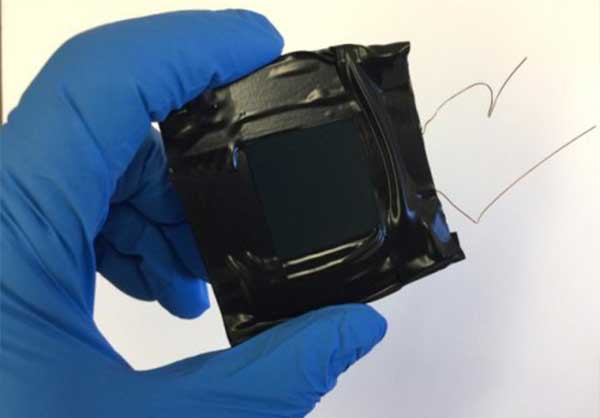Perovskite solar cells are prepared with a blend of organic molecules and inorganic substances that together gather light and transform it into electricity, just like apresent day more popular silicon-based solar cells. Perovskite photovoltaic equipment, but, can be prepared more cheaply and conveniently than silicon and on a flexible rather than stubborn substrate. The very first perovskite solar cells could appear on the market next year, and some have been reported to gather 20% of the total sun’s energy.
As per the researchers from the Lawrence Berkeley National Laboratory and theUniversity of California, researchers have identified a novel design that already accomplishes an average steady-state efficacy of 18.4 percent with a range of 21.7 percent and a peak efficacy of 26 percent.
“We have defined the record for distinct parameters of perovskite based solar cells, comprising the efficacy,” says thesenior author of the research, Alex Zettl, a lecturer at UC Berkeley. “The efficacy is bigger than any other number of perovskite cell – 21.7%, which is an incredible number considering we are the instigation of optimizing this.”

“It has the excellent potential to be the economical photovoltaic in the market, plugging into any sort of home solar system,” says OnurErgen, the head author of the research and graduate student from UC Berkeley.
The efficacy is also better than the range of 10 – 20% effectiveness of the polycrystalline silicone solar cells utilized to power most electronic gadgets and houses. Even the finest silicon solar cells, which are highly costly to produce, topped out at around 25% efficacy more than a decade ago.
The accomplishment comes and thanks to the novel method to link two perovskite solar cell substances – each tuned to absorb a distinct wavelength of sunlight or color – into single “graded bandgap” solar cell that absorbs almost the entire spectrum of visible light. Earlier attempts to link two perovskite substances have failed as the materials reduce each other electronic performance.
“It is a known fact that a graded band-gap solar cell in a considerably simple-to-control and easy to handle system,” says Zettl. “The good thing about this is that it links two highly valuable features – the graded bandgap along with the perovskite, a novel approach but known substance with surprisingly great efficacies – to avail the finest of both the worlds.”
It is feasible to add number of layers of perovskite separated from hexagonal boron nitride though it might not be essential, given the extensive spectrum efficacy they have already obtained, says the researchers. “People have had this knowledge of easy-to-prepare, roll-to-roll photovoltaics, where it is possible to pull off a roll, spray on the solar substance and roll it up back,” says Zettl. “With such new substance, we are in the process of theroll to roll bulk production; it is really almost similar to spray painting.”
Filed Under: News


Questions related to this article?
👉Ask and discuss on EDAboard.com and Electro-Tech-Online.com forums.
Tell Us What You Think!!
You must be logged in to post a comment.